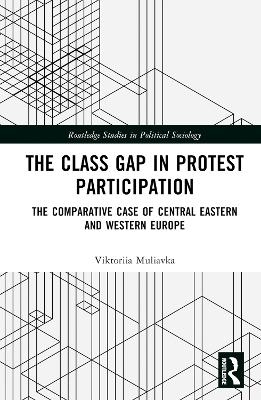
The Class Gap in Protest Participation
Routledge (Verlag)
978-1-032-63212-4 (ISBN)
In recent decades, mass protests have surged in both frequency and scale, yet there remains a significant variability in citizen involvement in non-electoral politics across Europe. While affluent Western democracies often witness robust civic engagement, countries of Central and Eastern Europe exhibit comparatively limited political participation. This regional gap is particularly pronounced when examining post-socialist workers who show minimal protest activity. Addressing this phenomenon, the book starts from the following question: Why do workers in Central and Eastern Europe demonstrate disproportionately lower rates of protest engagement compared to their Western European counterparts? The study reveals that the answer lies beyond conventional explanations such as legacies of communism. Cross-regional disparities in working-class protest activism are driven by differences in labor protection and left mobilization capacity. These variations stem from the historical context and the economic dependency of post-socialist countries, which create distinct conditions for workers' political engagement in the core and (semi-)periphery.
This book will be of interest to political scientists and sociologists, especially researchers interested in political participation, social inequality, and post-socialist transformations.
Viktoriia Muliavka is a postdoctoral researcher of comparative public policy at the University of Bamberg with a doctoral degree in sociology from the Polish Academy of Sciences. Her research and teaching focus on social inequalities, protest participation, welfare state preferences, and democratic resilience. Her work has been published in journals such as Social Movement Studies and Democratization.
1. Introduction
2. On the Intersection of Class and Region
2.1. Class Inequality and Protest Participation
2.2. Uneven Development and Post-socialist transformations
3. Production vs Service workers: Cross-Regional Disparities in Class Composition
4. Inequality, Redistribution and Protest Participation
4.1. Economic Inequality and the Relative Power
4.2. The Role of Labour Market Policies and Safety Nets in the Working-Class Protest Gap
5. Political Mobilisation from the Left
5.1. Union Membership and Mobilizing Infrastructure
5.2 Left Collective Attitudes and the Working-Class Protest Gap
6. Conclusion
Appendix A. Representation of Data across Time by Country (ESS 2002-2018)
Appendix B. Class Structure of Central Eastern and Western Europe based on Oesch 8-class scheme (2002-2018)
Appendix C. The Variance in the Share of Occupational Groups in Post-socialist and Western Europe by Countries based on Oesch 8-class Scheme (2018)
Index
| Erscheinungsdatum | 10.07.2024 |
|---|---|
| Reihe/Serie | Routledge Studies in Political Sociology |
| Zusatzinfo | 12 Tables, black and white; 14 Line drawings, black and white; 14 Illustrations, black and white |
| Verlagsort | London |
| Sprache | englisch |
| Maße | 156 x 234 mm |
| Gewicht | 400 g |
| Themenwelt | Naturwissenschaften ► Geowissenschaften ► Geografie / Kartografie |
| Sozialwissenschaften ► Politik / Verwaltung | |
| Sozialwissenschaften ► Soziologie ► Makrosoziologie | |
| Sozialwissenschaften ► Soziologie ► Spezielle Soziologien | |
| ISBN-10 | 1-032-63212-7 / 1032632127 |
| ISBN-13 | 978-1-032-63212-4 / 9781032632124 |
| Zustand | Neuware |
| Informationen gemäß Produktsicherheitsverordnung (GPSR) | |
| Haben Sie eine Frage zum Produkt? |
aus dem Bereich


